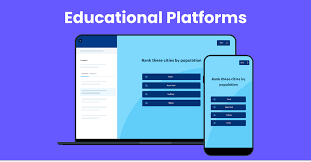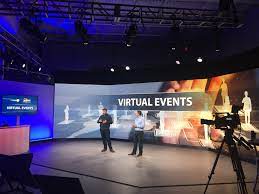In recent times, the world has witnessed a remarkable shift in the way events are conducted. With the advent of technology and the widespread use of the internet, events have found a new platform – the virtual realm. Online events have gained immense popularity and have become an integral part of our lives.
The concept of events online encompasses a wide range of gatherings, including conferences, trade shows, webinars, concerts, and even social gatherings. These virtual events provide numerous advantages that were previously unimaginable in traditional settings.
One of the most significant benefits of online events is accessibility. Regardless of geographical location or time zone, people from all around the world can participate in these events with just a few clicks. This opens up endless opportunities for networking, collaboration, and knowledge sharing on a global scale.
Furthermore, hosting events online eliminates logistical challenges such as travel expenses and venue limitations. Attendees can join from the comfort of their homes or offices, saving time and money. This convenience factor has made online events particularly appealing to professionals who may have busy schedules or limited resources.
Another advantage is the ability to reach a larger audience. Physical venues often have capacity constraints that limit the number of attendees. However, virtual platforms can accommodate thousands or even millions of participants simultaneously. This scalability allows event organizers to attract a broader audience and maximize their reach.
Moreover, online events provide advanced engagement features that enhance attendee experience. Participants can interact through live chats, Q&A sessions, polls, and surveys. They can also access digital resources such as presentations and handouts in real-time. These interactive elements foster engagement and create an immersive environment for attendees.
From an environmental standpoint, virtual events are more sustainable compared to their physical counterparts. By eliminating travel requirements for both attendees and speakers, online events significantly reduce carbon emissions associated with transportation. Additionally, digital materials eliminate paper waste typically generated at physical venues.
However, it’s important to acknowledge that there are still some challenges associated with online events. Technical issues, such as internet connectivity problems or platform glitches, can occasionally disrupt the seamless flow of these events. Organizers must invest in reliable technology infrastructure and provide technical support to ensure a smooth experience for participants.
In conclusion, events online have revolutionized the way we connect, collaborate, and learn. They offer unparalleled accessibility, convenience, scalability, engagement, and sustainability. As technology continues to evolve, we can expect even more innovative features and immersive experiences in the world of virtual events. So whether it’s attending a conference or enjoying a concert from the comfort of your own home, online events have undoubtedly become an integral part of our modern lives.
7 Advantages of Online Events: Expanding Global Reach, Cost-Effectiveness, Convenient Flexibility, Time Efficiency, Enhanced Networking Opportunities, Data Analytics, and Environmental Sustainability
- Global Reach
- Cost-Effectiveness
- Convenience and Flexibility
- Time Efficiency
- Enhanced Networking Opportunities
- Data Analytics
- Environmental Sustainability
Drawbacks of Online Events: Limited Personal Interaction, Technical Difficulties, Distractions and Lack of Focus, Limited Sensory Experience, Time Zone Limitations
- Limited personal interaction
- Technical difficulties
- Distractions and lack of focus
- Limited sensory experience
- Time zone limitations
Global Reach
The advent of online events has brought about a remarkable pro: global reach. In the past, attending an event in a different country meant dealing with travel arrangements, visa requirements, and other logistical challenges. However, with the rise of virtual gatherings, these barriers have been shattered.
Online events provide an incredible opportunity for participants from all corners of the globe to come together without the need for physical travel. This newfound accessibility has expanded the potential audience for events exponentially. People who were previously unable to attend due to geographical limitations can now join in and contribute to the conversation.
The ability to connect with individuals from different countries and cultures has immense value. It fosters international collaboration, enabling professionals to share ideas, insights, and expertise across borders. This exchange of knowledge fuels innovation and drives progress in various fields.
Moreover, global reach through online events facilitates networking on an unprecedented scale. Attendees can connect with like-minded individuals from diverse backgrounds, forging valuable relationships that transcend geographical boundaries. These connections can lead to partnerships, business opportunities, and collaborations that would have been challenging or even impossible to achieve in a traditional event setting.
Additionally, the global reach of online events promotes cultural exchange and understanding. Participants have the chance to learn about different perspectives and gain insights into various industries from around the world. This cross-cultural interaction helps break down stereotypes and fosters a sense of unity among participants who may have otherwise never crossed paths.
Furthermore, online events provide a platform for showcasing talent and expertise on an international stage. Professionals can share their knowledge with a diverse audience without having to physically travel or seek out speaking opportunities abroad. This exposure not only enhances their personal brand but also opens doors for future collaborations or career advancements.
In conclusion, one of the most significant advantages of online events is their ability to break down geographical barriers and create a truly global platform for collaboration and networking. The accessibility they offer expands the potential audience exponentially while fostering international connections that drive innovation and cultural exchange. As we continue to embrace the virtual realm, the possibilities for global reach and collaboration through online events are boundless.
Cost-Effectiveness
In today’s fast-paced world, cost-effectiveness is a crucial factor to consider when planning any event. This is where online events shine, offering a significant advantage over traditional in-person gatherings. One of the key benefits of virtual events is their ability to eliminate various expenses, making them a more affordable option for both organizers and participants.
When attending an online event, there are no travel expenses to worry about. Gone are the days of booking flights, hotels, and rental cars. Attendees can simply join the event from the comfort of their own homes or offices, saving money on transportation costs. This not only reduces financial burdens but also eliminates the stress associated with organizing travel arrangements.
In addition to travel expenses, virtual events eliminate the need for accommodations. Participants do not have to spend money on hotel rooms or other lodging options. They can attend the event from wherever they are, whether it’s their living room or a cozy coffee shop. This cost-saving aspect makes online events particularly attractive for individuals working within tight budgets.
Furthermore, venue rentals can be quite costly when organizing physical events. From finding the right space to securing it for a specific date and time, these expenses can add up quickly. With virtual events, there’s no need to worry about venue rentals at all. The event takes place in a digital space that can accommodate any number of attendees without incurring additional costs.
Another expense that can be eliminated through online events is physical materials. In traditional gatherings, organizers often spend money on printed materials such as brochures, handouts, and promotional items. These materials not only come with production costs but also contribute to environmental waste. By transitioning to virtual events, organizers can provide digital resources instead – presentations, documents, and other materials that attendees can access and download digitally.
By reducing or eliminating these various expenses associated with travel, accommodations, venue rentals, and physical materials; online events offer a cost-effective alternative for both organizers and participants. This affordability factor allows event organizers to allocate their budgets more efficiently, focusing on enhancing the overall experience and providing valuable content. Meanwhile, attendees can save money while still gaining access to valuable information and networking opportunities.
In conclusion, the cost-effectiveness of online events is a significant advantage that cannot be overlooked. By eliminating travel expenses, accommodations, venue rentals, and physical materials; virtual events offer a more affordable option for both organizers and participants. As technology continues to advance, the popularity of online events is expected to grow further, making them an increasingly attractive choice for individuals and businesses alike.
Convenience and Flexibility
Convenience and Flexibility: The Power of Online Events
Gone are the days when attending an event meant sacrificing time, effort, and sometimes even missing out on work commitments. Thanks to the rise of online events, convenience and flexibility have become the name of the game.
One of the most significant advantages of online events is the ability for participants to join from anywhere with an internet connection. No longer bound by geographical limitations, attendees can now be a part of conferences, webinars, or trade shows without ever leaving their homes or offices. This newfound convenience eliminates the need for long commutes, expensive travel arrangements, and time-consuming preparations.
Imagine being able to attend a conference in another country without having to book flights or hotels. With online events, this dream becomes a reality. Participants can simply log in to a virtual platform and instantly connect with speakers, exhibitors, and other attendees from around the globe.
Moreover, this convenience extends beyond location. Online events also offer flexibility in terms of scheduling. Busy professionals no longer need to worry about taking time off work or rearranging their schedules to attend an event. With virtual participation options, they can seamlessly integrate event sessions into their daily routines without disrupting their workflow.
Whether it’s joining a webinar during lunch breaks or attending a conference session after regular working hours, online events allow participants to customize their experience based on their availability and priorities. This flexibility not only benefits individuals but also encourages higher attendance rates as it accommodates diverse schedules and time zones.
Furthermore, online events provide on-demand access to recorded sessions or resources that can be accessed at any time convenient for participants. This feature is particularly advantageous for those who may have conflicting commitments during live sessions but still want to benefit from the valuable content shared during the event.
In conclusion, convenience and flexibility are key benefits that make online events truly transformative. By removing barriers such as commuting and scheduling conflicts, these virtual gatherings empower individuals to engage in professional development, networking, and knowledge sharing without compromising their existing commitments. As the world continues to embrace the digital landscape, the convenience and flexibility offered by online events will undoubtedly reshape the way we connect, learn, and collaborate.
Time Efficiency
One of the significant advantages of online events is their time efficiency. Unlike in-person gatherings, online events can often be completed within shorter durations, allowing attendees to make the most of their time.
The streamlined nature of online events contributes to their time efficiency. With focused content delivery and reduced breaks between sessions, organizers can pack a wealth of valuable information and engaging activities into a compressed timeframe. This means attendees can access a wide range of learning or networking opportunities without having to commit to lengthy schedules.
By eliminating the need for travel, online events save participants considerable time that would have otherwise been spent on commuting or waiting at airports. Attendees can simply log in from their preferred location and instantly immerse themselves in the event’s offerings.
Moreover, online events often provide on-demand access to recorded sessions after the live event concludes. This flexibility allows attendees to review content at their convenience, ensuring they don’t miss out on any valuable insights even if they couldn’t attend every session in real-time.
The time efficiency offered by online events is particularly beneficial for busy professionals who juggle multiple responsibilities or have limited availability. They can participate in conferences, webinars, or workshops without disrupting their work schedules significantly.
Additionally, shorter event durations contribute to increased engagement and attentiveness among attendees. With concise and focused presentations, participants are more likely to stay actively involved throughout the event without experiencing fatigue or information overload.
In conclusion, the time efficiency aspect of online events is a significant advantage that benefits both organizers and participants. By condensing valuable content into shorter durations and eliminating travel requirements, attendees can maximize their learning or networking opportunities within a compressed timeframe. Whether it’s attending a conference during a lunch break or joining a webinar after work hours, online events provide flexibility and convenience without compromising on quality or impact.
Enhanced Networking Opportunities
In the realm of online events, one notable advantage is the enhanced networking opportunities it provides. Virtual platforms offer a range of interactive features that bring participants together, regardless of their geographical locations. These digital tools have revolutionized networking and created connections that may not have been possible in traditional event settings.
One key feature that facilitates networking in virtual events is the chat room. Attendees can engage in real-time conversations, exchange ideas, and ask questions. This instant communication allows for meaningful interactions and the opportunity to connect with like-minded individuals from diverse backgrounds.
Breakout sessions are another valuable aspect of online events that enhance networking possibilities. These smaller group discussions offer a more intimate setting where participants can delve deeper into specific topics or share experiences. These focused conversations often lead to valuable connections and collaborations.
Virtual lounges are yet another innovative feature that mimics the casual networking environment found at physical events. Participants can gather in these virtual spaces to meet new people, engage in informal conversations, or even schedule one-on-one meetings. These lounges create an atmosphere conducive to building professional relationships and expanding networks.
The beauty of these digital networking tools is that they transcend geographical barriers. Attendees from different corners of the world can connect and collaborate effortlessly without the need for travel or physical presence. This opens up a whole new realm of possibilities for expanding professional networks on a global scale.
Moreover, online events often attract diverse audiences with varying expertise and backgrounds. This diversity enriches networking opportunities by exposing participants to fresh perspectives, innovative ideas, and potential partnerships across industries and disciplines.
In conclusion, enhanced networking opportunities are a significant pro of online events. The interactive features offered by virtual platforms such as chat rooms, breakout sessions, and virtual lounges create an environment conducive to building connections on a global scale. As technology advances further, we can expect even more innovative ways to network virtually and forge meaningful professional relationships across borders.
Data Analytics
One of the significant advantages of hosting events online is the powerful data analytics capabilities that come with it. Online event platforms provide organizers with valuable insights into attendee engagement, session popularity, and participant behavior.
With data analytics, organizers can track attendee engagement levels throughout the event. They can monitor metrics such as session attendance, time spent in each session, and interactions with event materials. This information helps organizers understand which sessions resonated most with attendees and identify areas that may need improvement.
Furthermore, online event platforms allow organizers to collect feedback through surveys or polls. These tools enable attendees to share their thoughts and opinions on various aspects of the event, including content quality, speaker performance, and overall experience. By analyzing this feedback, organizers can gain valuable insights into what worked well and what could be enhanced in future events.
Data analytics also provides a deeper understanding of participant behavior during online events. Organizers can track metrics like click-through rates on presentations or resource downloads to gauge attendee interest in specific materials. This information helps tailor future content offerings to better meet attendee preferences.
Additionally, data analytics allows for real-time monitoring of event performance. Organizers can assess registration numbers, attendance rates, and engagement levels throughout the event to make informed decisions on the fly. This flexibility enables them to optimize the event experience in real-time based on attendee behavior and preferences.
By leveraging data analytics from online events, organizers gain valuable insights that contribute to continuous improvement. They can identify trends and patterns that inform decision-making for future events. Whether it’s adjusting the agenda based on popular sessions or refining content based on attendee feedback, data-driven insights play a crucial role in enhancing the overall event experience.
In conclusion, data analytics is a powerful advantage of hosting events online. The ability to track attendee engagement levels, measure session popularity, collect feedback through surveys or polls, and gain insights into participant behavior empowers organizers to make informed decisions for future improvements. By harnessing these analytics capabilities, online events can be continuously optimized to deliver exceptional experiences for attendees.
Environmental Sustainability
One of the standout advantages of events online is their positive impact on environmental sustainability. By eliminating the need for physical travel and reducing paper waste associated with traditional events, online gatherings make a significant contribution to creating a more sustainable environment.
Physical events often require attendees and speakers to travel long distances, resulting in substantial carbon emissions from transportation. However, with online events, participants can join from anywhere in the world using their devices and an internet connection. This eliminates the need for air travel, car journeys, or other modes of transportation that contribute to greenhouse gas emissions.
Furthermore, traditional events typically generate significant amounts of paper waste through printed materials such as brochures, programs, handouts, and signage. By transitioning to online platforms, these materials can be digitized and accessed electronically. This not only reduces paper consumption but also minimizes the associated energy usage and waste generated during production and disposal.
The environmental benefits of hosting events online extend beyond reduced carbon emissions and paper waste. Virtual platforms also allow for more efficient use of resources such as electricity and water. Physical venues require lighting, heating or cooling systems, water supply for sanitation facilities, among others. By shifting to virtual spaces, these resource requirements can be significantly reduced or eliminated altogether.
Moreover, hosting events online encourages organizers to adopt sustainable practices in other areas as well. For instance, virtual platforms offer features like digital badges instead of physical ones that would otherwise end up in landfills after each event. Additionally, catering services are minimized or eliminated altogether in online events since participants can enjoy meals at their own locations.
Overall, the environmental sustainability aspect is a compelling reason to embrace online events. By reducing carbon emissions associated with travel and minimizing paper waste generation while promoting efficient resource utilization, virtual gatherings play an essential role in building a greener future for our planet.
As technology continues to advance and improve the virtual event experience even further, we can expect even greater strides in environmental sustainability within this realm. Embracing online events not only offers convenience and accessibility but also aligns with our collective responsibility to protect and preserve the environment for future generations.
Limited personal interaction
While online events have become increasingly popular, it’s important to acknowledge one significant drawback: limited personal interaction. Unlike physical events, where attendees can engage in face-to-face conversations and establish meaningful connections, virtual events often lack the same level of interpersonal interaction.
In a virtual setting, the absence of physical presence can make it more challenging to build relationships and network effectively. Non-verbal cues, such as body language and facial expressions, play a crucial role in communication and establishing rapport. Unfortunately, these nuances are often lost in online interactions, making it harder to form genuine connections.
Networking at virtual events may also feel less organic. In physical gatherings, attendees have the opportunity to strike up conversations during breaks or social events spontaneously. However, in virtual settings, networking sessions are often structured and require intentional effort from participants to engage with others.
Furthermore, online platforms may not provide the same informal spaces for networking that physical venues offer. The casual conversations that happen while waiting in line for a coffee or during lunch breaks can lead to unexpected connections and valuable insights. These impromptu interactions are difficult to replicate in an online environment.
While chat features and breakout rooms attempt to facilitate networking opportunities during virtual events, they may not fully compensate for the lack of personal interaction. It can be more challenging to establish trust and form lasting relationships when participants are limited to written messages or brief video calls.
However, event organizers can mitigate this con by incorporating interactive elements into their online events. They can create dedicated networking sessions using video conferencing tools or provide virtual spaces where attendees can connect on a more personal level. Additionally, encouraging participants to engage actively through chat discussions or Q&A sessions can help foster a sense of community and interaction.
In conclusion, while online events offer numerous advantages such as accessibility and convenience, they do come with the drawback of limited personal interaction compared to physical gatherings. Event organizers should strive to find innovative ways to facilitate meaningful connections among attendees in virtual settings, ensuring that participants can still benefit from networking opportunities despite the challenges posed by the absence of face-to-face interaction.
Technical difficulties
While online events have undoubtedly transformed the way we connect and engage, they are not without their drawbacks. One significant con of events online is the potential for technical difficulties.
Poor internet connectivity, audio or video glitches, and platform malfunctions can all disrupt the smooth flow of an online event. These technical challenges can be frustrating for both organizers and participants alike.
Imagine eagerly joining a webinar only to encounter constant buffering or audio that cuts in and out. Such interruptions can hinder communication, diminish the overall experience, and even lead to missed opportunities for interaction or learning.
Furthermore, platform malfunctions can cause delays or even prevent access to the event altogether. This can be particularly problematic if participants have invested time and resources into attending, only to be met with technical roadblocks.
Organizers bear the responsibility of ensuring a seamless technological experience for their attendees. They must invest in reliable technology infrastructure, choose reputable platforms, and conduct thorough testing prior to the event. Additionally, providing technical support during the event is crucial in swiftly addressing any issues that may arise.
Despite these challenges, it’s essential to note that advancements in technology continue to improve the reliability of online events. As internet connectivity becomes more robust and platforms become more sophisticated, instances of technical difficulties are gradually decreasing.
In conclusion, while technical difficulties remain a con of events online, they should not overshadow the many benefits this format offers. With proper preparation and support systems in place, organizers can minimize disruptions and create a more seamless experience for participants. As technology continues to evolve, we can expect these challenges to become less prevalent over time.
Distractions and lack of focus
While online events have undoubtedly brought convenience and accessibility to the forefront, it is important to address one potential drawback: the issue of distractions and lack of focus. Attending an event from the comfort of one’s home or office can inadvertently lead to a decline in engagement and attentiveness.
In a traditional event setting, participants are usually physically present in a dedicated space, surrounded by like-minded individuals. This environment fosters a sense of focus and minimizes external distractions. However, when attending an event online, individuals are exposed to their familiar surroundings, which may not be conducive to maintaining undivided attention.
The allure of multitasking becomes a significant challenge during virtual events. With the ability to access emails, social media platforms, or other work-related tasks just a few clicks away, participants may find it tempting to divide their attention between the event and other activities. This divided focus can result in reduced comprehension of the content being presented and limit meaningful engagement with speakers or fellow attendees.
Furthermore, the physical separation from others at an online event can lead to increased susceptibility to interruptions from family members, colleagues, or household chores. These interruptions can disrupt the flow of concentration and make it difficult for participants to fully immerse themselves in the event experience.
To mitigate these challenges, both organizers and attendees must be proactive in creating an environment that promotes focus during online events. Organizers can implement strategies such as interactive sessions, engaging presentations, and incorporating breaks for participants to rejuvenate their attention spans. Additionally, clear guidelines on expected behavior during virtual events can help set expectations for attendees regarding attentiveness and active participation.
On the attendee side, adopting certain practices can help enhance focus during online events. Designating a dedicated workspace free from distractions within their homes or offices can create a more conducive environment for engagement. Setting aside specific times for attending virtual events without any competing obligations can also contribute to maintaining undivided attention.
While distractions and lack of focus are valid concerns when it comes to online events, they can be mitigated with conscious efforts from both event organizers and participants. By recognizing the potential challenges and implementing strategies to minimize distractions, attendees can fully capitalize on the benefits of virtual events, ensuring an enriching and meaningful experience.
Limited sensory experience
While online events have brought numerous advantages, it’s important to acknowledge one potential drawback: the limited sensory experience they offer compared to physical events. In-person gatherings often engage multiple senses, creating a rich and immersive environment that can be challenging to replicate virtually.
One of the key elements missing in online events is ambiance. Physical venues are carefully designed to create a specific atmosphere that complements the event’s theme or purpose. Lighting, decor, and even scent play a vital role in setting the mood and enhancing the overall experience. Unfortunately, these sensory cues are difficult to recreate in a virtual setting.
Live performances also contribute significantly to the sensory appeal of physical events. Whether it’s a captivating musical performance or an awe-inspiring dance routine, witnessing such acts firsthand can evoke powerful emotions and create lasting memories. Online events may offer pre-recorded performances or live-streamed shows, but they often lack the intimacy and energy that come with being physically present.
Tactile materials are another aspect that adds depth to physical events. Attendees can touch and feel products, prototypes, or artistic installations, allowing for a more interactive experience. In contrast, online events rely primarily on visual and auditory elements, limiting the opportunity for attendees to engage their sense of touch.
Immersive environments are yet another aspect that may be lacking in virtual events. Physical venues can transform spaces into unique settings that transport attendees into different worlds or themes. Whether it’s an elaborate stage design or an intricately decorated exhibition booth, these immersive environments captivate attendees and provide an unforgettable experience.
Despite these limitations, event organizers have been creative in finding alternative ways to engage participants’ senses during online events. They may incorporate visual effects through graphics or videos, use high-quality audio systems for optimal sound experiences, and encourage interactive elements such as virtual reality (VR) or augmented reality (AR) components when feasible.
In conclusion, while online events provide numerous benefits such as accessibility and convenience, they may fall short when it comes to offering a fully immersive sensory experience. The ambiance, live performances, tactile materials, and immersive environments that physical events offer are difficult to replicate virtually. However, as technology continues to advance, we can expect improvements in virtual experiences that aim to bridge this sensory gap and provide attendees with more engaging and immersive online events.
Time zone limitations
One of the notable drawbacks of online events is the issue of time zone limitations. While these virtual gatherings provide the advantage of global accessibility, participants from different regions often face scheduling conflicts due to varying time zones. This can pose challenges when trying to find a suitable time that accommodates everyone’s availability.
Coordinating an event that caters to participants across different time zones can be a complex task. It requires careful planning and consideration to ensure that the chosen event time works for as many people as possible. However, it is nearly impossible to find a perfect time that suits everyone due to the vast differences in time zones around the world.
Participants may find themselves having to wake up or stay up late in order to attend an event happening in a different time zone. This can lead to fatigue and decreased engagement, affecting the overall experience for both attendees and organizers.
Moreover, scheduling conflicts can also impact speakers or presenters who may need to adjust their availability based on various time zones. It becomes challenging for them to deliver their presentations or participate in live discussions if they are required to be online during inconvenient hours.
To mitigate this con, event organizers can employ certain strategies. One approach is rotating event schedules, alternating between different times for each session or offering multiple sessions at different times throughout the day. This allows participants from various time zones to have access to at least one session that aligns with their availability.
Another solution is providing recorded sessions or on-demand content that participants can access at their convenience. While this may not replicate the real-time experience, it offers flexibility for individuals who cannot attend live sessions due to conflicting time zones.
Despite these challenges, online events continue to offer valuable opportunities for global networking, collaboration, and knowledge sharing. By being aware of the time zone limitations and implementing strategies to address them, event organizers can strive towards creating inclusive experiences that cater to participants from around the world.









